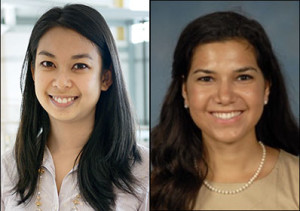Professor John P. Fisher has been selected as the next chair of the A. James Clark School of Engineering’s Fischell Department of Bioengineering (BioE), effective Jan. 4, 2016.
“Dr. Fisher’s rapid ascension in academic rank parallels his many outstanding achievements in both teaching and research,” said Darryll Pines, Farvardin Professor and Dean of the A. James Clark School of Engineering. “As a leader in the areas of biomaterials, tissue engineering, and bioprinting, Dr. Fisher has demonstrated firsthand bioengineering’s capacity to improve quality of life for millions. I am confident he will advance the Fischell Department of Bioengineering’s reputation as a top-tier program by further propelling the department’s commitment to groundbreaking research, high-quality education, and engineering entrepreneurship.”
With the University of Maryland’s A. James Clark Hall (link is external) slated to open in 2017, Fisher will assume the role of Chair as the department enters a new era of growth in both size and breadth of research. The 184,000-square-foot building will become the new home of the Fischell Department of Bioengineering and will house state-of-the-art technology to advance the department’s capabilities in areas including digital fabrication, tissue engineering, bioinformatics, optics, vaccine research, and biomedical device development. Coinciding with this expansion, the department plans to add up to seven new faculty members by 2019.
Prior to his appointment as Chair, Fisher served as Associate Chair and Director of Graduate Studies for the department and, in 2013, he was named the Fischell Family Distinguished Professor. From 2009 to 2012, Fisher served as BioE Associate Chair and Director of Undergraduate Studies.
Fisher is a Fellow of the American Institute for Medical and Biological Engineering, and a member of the Biomedical Engineering Society, Society for Biomaterials, and Tissue Engineering and Regenerative Medicine International Society. He is currently Editor-in-Chief of the journal Tissue Engineering, Part B: Reviews, and Continental Chair Elect of the Tissue Engineering and Regenerative Medicine International Society – Americas Chapter. This fall, he visited the National University of Ireland, Galway as a Fulbright Fellow.
As Principal Investigator for the Tissue Engineering and Biomaterials Laboratory, Fisher established a mission to develop engineered tissues, composed of biomaterials and transplanted cell populations, for the treatment of traumatic or pathological tissue defects. His laboratory has published more than 110 articles, book chapters, and proceedings, and has delivered more than 200 invited and contributed presentations, while utilizing over $7 million of financial support from the National Institutes of Health, National Science Foundation, Food and Drug Administration, National Institute of Standards and Technology, Department of Defense, and other institutions.
Over the years, the laboratory’s research successes have earned publication in a number of leading journals including Biomaterials, Biomacromolecules, Nature Protocols, and Tissue Engineering. Members of Fisher’s lab have presented studies to the Biomedical Engineering Society, Society for Biomaterials, Tissue Engineering and Regenerative Medicine International Society, World Biomaterials Conference, and International Conference on Tissue Engineering.
Fisher first started with the University of Maryland as an assistant professor with the Department of Chemical and Biomolecular Engineering before moving to help establish the Fischell Department of Bioengineering in 2006.
Fisher holds a Ph.D. in Bioengineering from Rice University, as well as a B.S. and an M.S. in Chemical Engineering from Johns Hopkins University and the University of Cincinnati, respectively. Upon completing his Ph.D., Fisher served as a postdoctoral fellow with the University of California Davis Medical Center Department of Orthopaedic Surgery.
Fisher will serve as successor to current chair William E. Bentley, who will be the inaugural director of the new Robert E. Fischell Institute for Biomedical Devices.
Article originally from: Fischell Department of Bioengineering.



